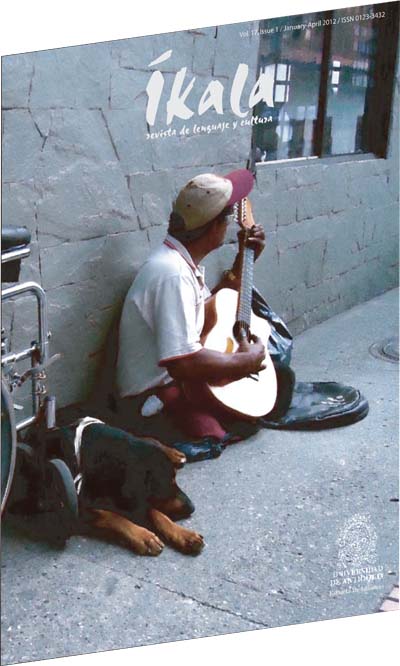Etnoenglish: Weaving Words, Stories and Life Projects of the Zenú People
DOI:
https://doi.org/10.17533/udea.ikala.7938Keywords:
indigenous communities, etnoenglish, teaching, motivation, learningAbstract
Colombian bilingual educative policies aim to develop communicative competences in all schools. However, these policies are rarely functional in multicultural communities, such as indigenous communities. At The San Antonio Abad indigenous school, the teaching of English was irrelevant for the students because they never engaged with learning the language. Due to this problem, an ethnographic study was carried out. This study allows us to integrate the identitarian elements of the community to the teaching and learning process of the English language. The results showed that the cohesive element of the community was the arrow cane weaving process. This permitted the implementation of a set of strategies called Etnoenglish, based on the discourse and interaction patterns related to the weaving craftsmanship process. The implementations of these strategies improved the motivation and English learning among the students.
Downloads
References
Asher, J. (2009). Learning another language through actions (7th edition). California, Estados Unidos: Sky Oaks Productions, Inc.
Bransford, J., Brown, A., & Cocking, R. (2000). How people learn: Brain, mind, experience, and school. Washington, Estados Unidos: National Academy Press.
Cummins, J. (2001). Negotiating identities: Education for empowerment in a diverse society (2nd edition). Los Ángeles, Estados Unidos: California Association for Bilingual Education.
Early, M., & Cummins, J. (2002). From literacy to multiliteracies: Designing learning environments for knowledge generation within the new economy. Victoria, Canadá: Social Sciences and Humanities Research Council of Canada.
Jaramillo, S., & Turbay, S. (2000). Geografía humana de Colombia, Región Andina Central (Tomo IV, volumen III). Bogotá, Colombia: Instituto Colombiano de Cultura Hispánica.
Larraín, A. (2009). Patrimonalización del arte de la cultura indígena en Colombia, el caso del sombrero vueltiao. Tellus, 17(1), 207-229.
Lewis, M. (1997). Implementing the lexical approach: Putting theory into practice. Hove, Inglaterra: Language Teaching Publications
Skutnabb-Kangas, T. (2000). Linguistic genocide in education or worldwide diversity and human rights? Mahwah, Estados Unidos; Londres, Inglaterra: Lawrence Erlbaum Associates.
Soltis, J. (1984). On the nature of educational research. Educational Researcher, 13(10), 5-10.
Willis, D., & Willis, J. (2007). Doing task-based teaching. Oxford, Inglaterra: Oxford University Press
Yunén, R. (2004). Estrategias de etnicidad y formación de identidades en el Caribe. Recuperado de http://www.cielonaranja.com/yunen3.htm
Downloads
Published
How to Cite
Issue
Section
License
Copyright (c) 2012 Íkala, Revista de Lenguaje y Cultura

This work is licensed under a Creative Commons Attribution-NonCommercial-ShareAlike 4.0 International License.












